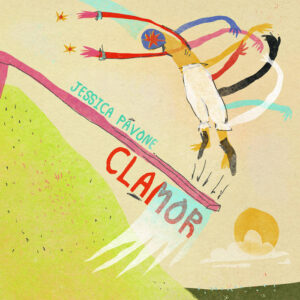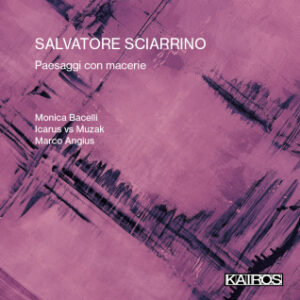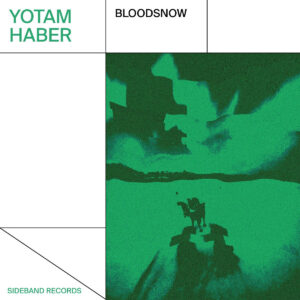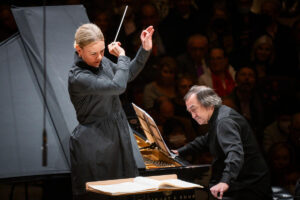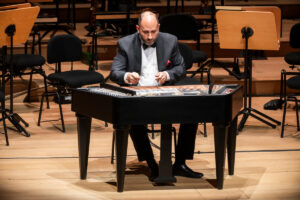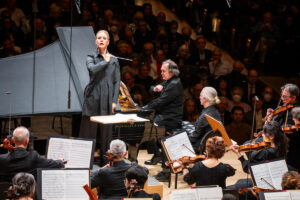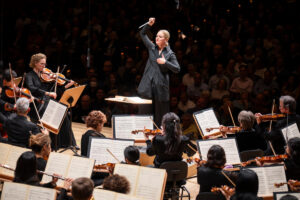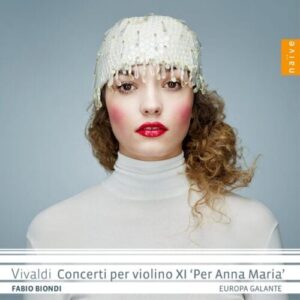
Flotsam & Jetsam is a new release by Microfest Records that features pieces by three contemporary composers. Altromondo (2013-15, rev. 2018), by Kurt Rohde, consists of ten tracks as performed by Genevieve Feiwen Lee and Aron Kallay. Titanium (2014), by João Pedro Oliveira, is performed by the piano duo of Vicki Ray and Aron Kallay, Nothing hidden that will not be revealed (2007, rev. 2019), by Alan Shockley, is also performed by Kallay. These pieces are comprised mostly of piano music although there are many extended techniques as well as other unusual instruments included. The album is sub-titled “Music for Piano and Assorted Accoutrements” and as a result, each piece has its own distinctive characteristics.
The first piece on the album is Kurt Rohde’s Altromondo, written for piano duo. This proceeds in ten shortish movements of between two and seven minutes each. In addition to playing extended techniques on the prepared piano, the performers are also called upon to incorporate sounds from a variety of items such as the melodica, harmonica, Chinese paper accordions, triangles and antique cymbals. The inspiration of the piece is roughly nautical, with movements such as “flotsam”, “jetsam” and “derelict”. The music has an unconventional and otherworldly texture that is constantly shifting, coalescing, scattering and then reassembling itself as it flows along. The album notes for the final movement serves to summarize the entire structure of Altromondo: “All things are an assembly of parts; even the parts have parts, moving or still, adding up to a whole, breaking down further to the breakably small.”
The first movement of Altromondo is “piano…piano [homonym]” and this acts as an introduction to the entire piece. Light bell tones ring out, quietly accompanied by a repeating two note line from the melodica. Mysterious phrases now emanate from the melodica, dominating the texture. Rising scales, disjointed rhythms and independent lines evolve into what sounds like a chattering conversation. A short silence is followed by a renewal of the bell tones and a more solemn melody line. The piano enters with aggressive rhythms that disrupt the restful feeling and build to a sudden ending. The contrast between the bell tones, melodica and piano create a distinctive texture that seems to oscillate between the abstract and the conventional. Genevieve Feiwen Lee and Aron Kallay establish an effective foundation for the diverse combinations later heard throughout the entire piece.
“Flotsam” and “Jetsam”, title tracks for the album, are two of the shorter movements in Altromondo and are most directly inspired by the nautical theme. Jetsam refers to material thrown overboard from a ship that is sinking or struggling in heavy seas. This movement begins with strong piano chords in the middle registers, perhaps signifying some distress. There are syncopated melodic notes accompanied by single notes that arc above, bringing a mysterious and introspective feel. Rapid rhythms and descending scales cascade into a gentle harmony at the finish. “Jetsam” evokes the panic and drama of lightening the load when facing disaster. “Flotsam” illustrates the consequences of debris seen scattered across the water. Straightforward chords in conventional harmony open, but now stern, declarative chords add a certain tension. The presence of flotsam indicates a state of maritime disorder, and the rhythms become increasingly disorganized and jumpy to the unsettled finish. All of this is expressively played with a stylish and engaging flair.
Other movements are playfully off the maritime theme. “aside: Let Me Play With Your Poodle”, the fifth movement, opens with a strong piano chord and uptempo ‘fanfare’ passage. Complex independent passages in various registers provide an intricate, yet stylish sound, reminiscent of 1930s dance music. The third movement, “aside the side I” opens with soft repeating phrases in middle/high register with intriguing harmony. The lovely feel to this interrupted suddenly by strong, deep chord. This is more introspective than the other movements and described as ‘Himmelmusik’ in the album notes. Movement 7, “aside the side II” expands on this. Other tracks on the album are similarly surprising and imaginative.
Masterfully performed by Genevieve Feiwen Lee and Aron Kallay, Altromondo presents a wonderful assemblage of musical sounds not often heard together, creating new textures and nuances that stimulate the imagination in unexpected ways.
The second piece on the album is Titanium by João Pedro Oliveira, performed by the piano duo of Vicki Ray and Aron Kallay. One of four works by Oliveira inspired by the earthly elements and, more specifically, the Greek gods of strength, Titanium is full of rapid bursts of abstract phrases that create a mysterious and slightly ominous atmosphere. There is an excellent mix of low rumbling in the piano with light percussion riding above. All of this is played with careful attention to precision, and while complex, it is never overwhelming. An inventive mix of sounds, it is space-like at times with a slightly alien feel. The phrasing changes in some detail but overall this piece has similar structural lines throughout.
At 9:00 the tempo slows and the texture thins out with short stretches of silence between the passages. Still mysterious but now more transparent as the layering of sounds is somewhat reduced. The feeling is more distant and remote as a series of sharp piano chords build to the finish. Titanium is a nicely balanced mixture of the abstract and the accessible, skillfully realized by the Ray-Kallay duo.
The final work, Nothing hidden that will not be revealed, by Alan Shockley is 25 minutes in duration and the longest piece of the album. A great variety of sounds and expressions are heard in this piece, all exquisitely played by Aron Kallay. Dramatic and mysterious, the piece was Inspired by Buddhist themes and sayings from the Gnostic gospels. Alan Shockley writes that “This is a piece about the sounds behind the sounds being actuated by the player’s hands on the keys. Every sound is connected to other sounds, resonances, ghosts, and sympathetic vibrations.”
Nothing hidden … begins with a quiet opening chord, distant and remote. Short, rapid phrases repeat in middle piano registers. A low rumble is heard, followed by meandering passages and angry pounding. The mysterious feel to this is enhanced by contentious passages that vary in tempo and dynamic. The piece proceeds, shifting back and forth between quiet, single notes and louder, ponderous sounds. Kallay strums on the piano strings, adding a distinctly alien element. There are great contrasts throughout, reflecting an almost bipolar character. Nothing hidden … is pensive at times, as if waiting to spring on the listener.
At 10:45 a great cluster chord booms out like a sudden explosion. In contrast, soft conventional chords soon appear, interspersed with various extended techniques. Quieter cluster chords are heard like distant thunder. The audio engineering on this piece is exceptional – the nuances of all the many unconventional sounds are clearly heard. At 15:45 a hymn melody is heard with some baroque ornamentation – a welcome bit of familiarity. Sharply dynamic chords follow, sounding like lightning strikes along with distant rumbles in the lower registers. A series of repeating single low notes sound like a the striking of a clock tower. The piece slows and fades towards its finish, as if winding down. Nothing hidden that will not be revealed skillfully weaves a great variety of sounds and textures from the piano, all masterfully played by Aron Kallay.
Flotsam & Jetsam delivers a vibrant palette of colors and textures that expand the expressive possibilities of contemporary piano music beyond the conventional.
Flotsam & Jetsam is available directly as a digital download from Microfest Records.
